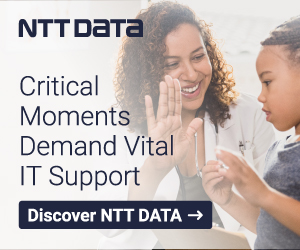By Elizabeth Smith, President of E. Smith Consulting, LLC
Have you thought about how an acquisition would accelerate your growth? Have you been asked to provide a list of potential companies for consideration? This article presents an alternative approach to creating long lists of unviable candidates and seemingly endless meetings without tangible outcomes. You, as a person knowledgeable about your industry and competition, can play a critical role in guiding this process to success.
Key Action #1 – Create a Project Plan
Develop a simple schedule with standing meeting times, activities, and specific deliverables. This process ideally will take three months, but can be shortened depending on urgency. During this time frame, you should complete the following:
- Formulate your multi-disciplinary team and set your calendars.
- Discuss your current growth strategy and existing challenges and establish your criteria for candidate companies.
- Research and evaluate potential companies’ strategic fit.
It will be critical to focus early on a realistic number of companies to achieve meaningful results in a reasonable time frame. After all, everyone has day jobs!
Key Action #2– Form a Multi-Disciplinary Working Group
You will need to enlist some of your colleagues in this process to get a broader perspective on potential candidates. This team of 5 to 8 members could include other sales people, GWAC/IDIQ managers, contracts, a small business representative, and other externally-facing colleagues. This team will need to be able to dedicate adequate time for the project. A researcher with access to federal competitor databases will be needed.
Key Action #3– Create Meaningful Selection Criteria
A common mistake is to develop broad criteria that miss the most important aspects of potential targets and, as a result, create long lists of unviable candidates. It is critical to develop a meaningful list of quantitative and qualitative criteria that quickly narrows the list. You, as a federal BD professional, know how to do this – after all, that is how you develop your qualified pipeline!
Common criteria include revenue size, company type (large or small business, type of small business), agency presence, and existing contract vehicles. But don’t stop there! More important criteria that will generate companies with true value to you include:
- Company reputation and performance – How is this company perceived in the marketplace and by clients? Do they have good CPARS/past performance? Would you work there?
- Unique agency relationships – Do they bring deep relationships with customers that are important to you? Have they translated into sales?
- Key talent – Is there a solid, performing team of sales people? Do they have strong capture and proposal functions? How much of it is outsourced?
- Prime/sub roles on contracts – Are they a prime on most of the contracts that you are interested in, and are they set-asides? Are they a value-add subcontractor, or are they doing more staff augmentation work? When are the recompetes?
- Technical capabilities – Do they have unique capabilities that fill gaps in your skills? On which deals would those capabilities be used? Do they have important certifications that you need?
You may not need every data point on this list, but by talking through these factors you should be able to narrow your list down to 10 or fewer candidates.
Key Action #4– Evaluate Top Candidates’ “Strategic Fit”
Acquisitions can be painful (especially from the acquired company’s perspective) and, if there is not a good strategic fit, the value of the acquisition may decline over time. Key talent might leave and critical recompetes can be lost. This “intangible” aspect of the acquisition discussion is important. Ask yourself – if you had a crystal ball, does the direction that this company is headed complement your planned direction?
Do you have complementary strategies about market direction? Do your goals align in terms of customers, development of new offerings, and delivery of value? Look at your candidate list and ask – do they tend to focus on value and creativity, or are they more staff augmentation? What kinds of opportunities are they bidding on? Can they write great proposals? What is their win rate? Are they focused on winning other people’s recompetes or are they interested in developing new offerings and opening up new markets? Do they use low price to win?
As you generate and evaluate your list of candidates, keep both quantitative and qualitative factors in mind. Also remember – you aren’t limited to those that are on the market today.
 Elizabeth Smith, President of E. Smith Consulting, LLC, brings more than 30 years of experience and over $10B in government sales. She understands both sides of an acquisition and helps companies with their growth strategies including M&A plans and execution. To find out more about E. Smith Consulting, visit them on the web at www.esmithconsulting.net
Elizabeth Smith, President of E. Smith Consulting, LLC, brings more than 30 years of experience and over $10B in government sales. She understands both sides of an acquisition and helps companies with their growth strategies including M&A plans and execution. To find out more about E. Smith Consulting, visit them on the web at www.esmithconsulting.net





